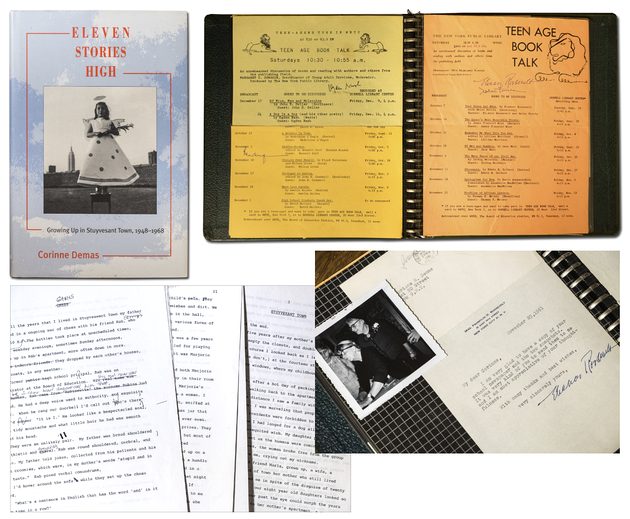
DEMAS, Corinne
Eleven Stories High: Growing Up in Stuyvesant Town, 1948–68
An archive of Demas’ memoir of growing up in Stuyvesant Town, a carefully planned postwar neighborhood in central Manhattan where prospective tenants were closely screened. Many were immigrants or the children of immigrants. Blacks were excluded in the early years. For most, ST represented a step up the social ladder, into the middle class, with higher incomes, better education for the children, less onerous working conditions for the fathers, and mothers who could stay at home as housewives. Eleven Stories High explored the changing roles and expectations of women between Demas’ mother's generation and her own, as well as being a Gentile in a Jewish world; the secret community of Greeks in America; and the contrast between "the country" and the vast sterility of Stuyvesant Town where “an earthworm was an exotic, a butterfly a miracle.” When Eleven Stories High was published, Demas became an inadvertent spokesperson for Stuyvesant Town, and her comments on various ST-related matters – having to do with real estate values in the late 1990s and early 2000s; gentrification; the decline of the middle class, and the contrast with the values instilled by her upbringing in this "accidental utopia," as she called it – appeared in the New York Times as an article, an op-ed piece, and a letter to the editor. The book itself generated several large files of correspondence: included are hundreds of pages of readers sharing their responses to the book and their own recollections of Stuyvesant Town. Demas’ book is a memoir, but her archive is a social history. Little else has been written about ST: Charles Bagli’s 2013 book Other People's Money focused on Stuyvesant Town and Peter Cooper Village as the center of the greatest real estate deal ever made – and then, at the height of the Great Recession, ever to fail, but little has been written about the community itself, which helped give rise to the idea of gated communities around the country; helped to define what it meant to be in the middle class at that time, especially in an urban area; and embodied so many elements of both the positive and negative aspects of "the American Dream." A full inventory is available on request.
[#033849]
$9,500
All books are first printings of first editions or first American editions unless otherwise noted.
See more items by DEMAS, Corinne